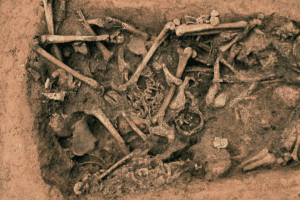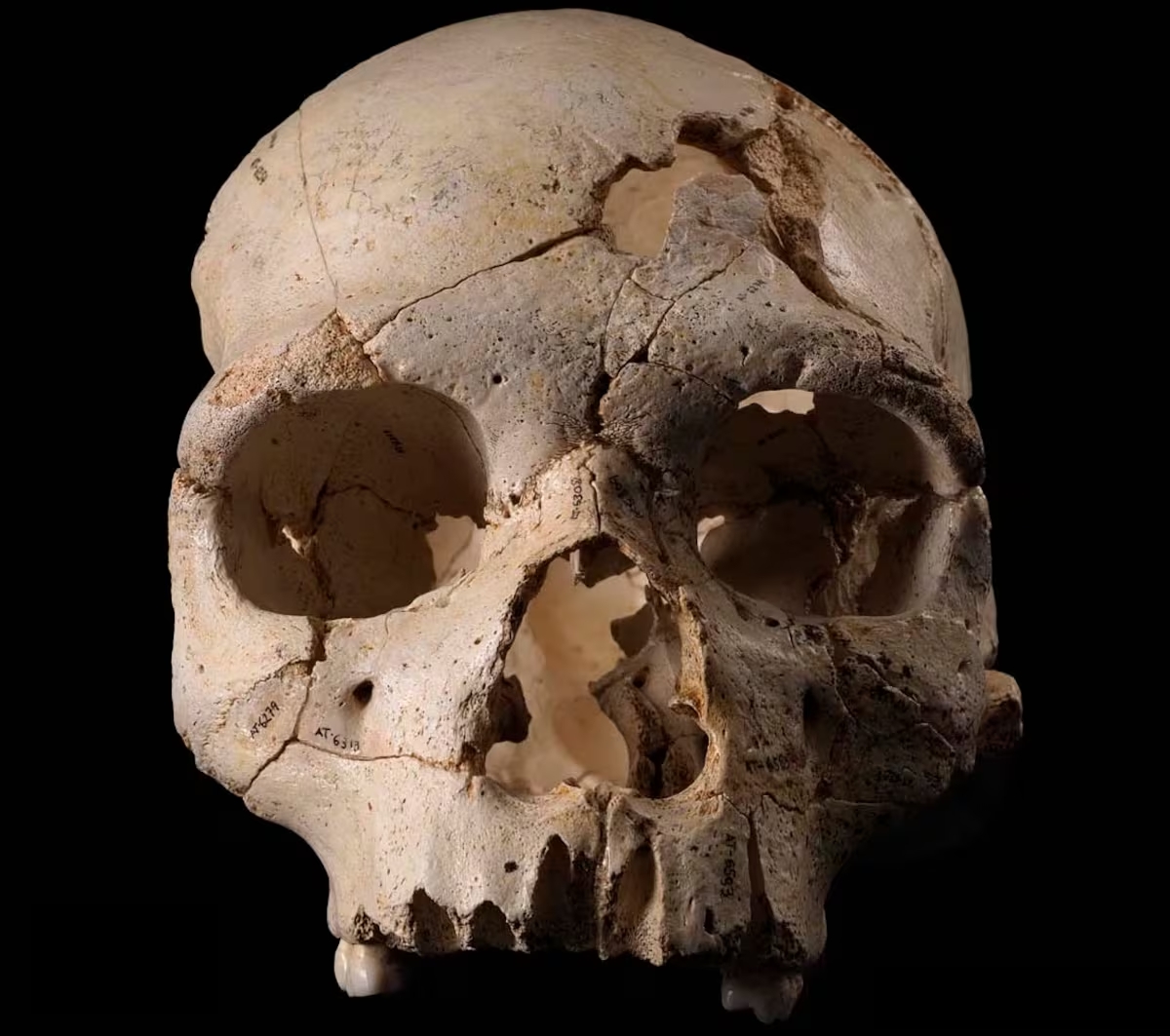
Deep beneath the hills of northern Spain lies a cave called La Sima de los Huesos—the Pit of Bones. In this darkness, archaeologists uncovered a stark truth about humanity: evidence that violence, cruelty, and murder have been with us from the very beginning.
This isn’t just a prehistoric grave—it stands as the world’s oldest crime scene, hinting that even our distant ancestors were entangled in violence.
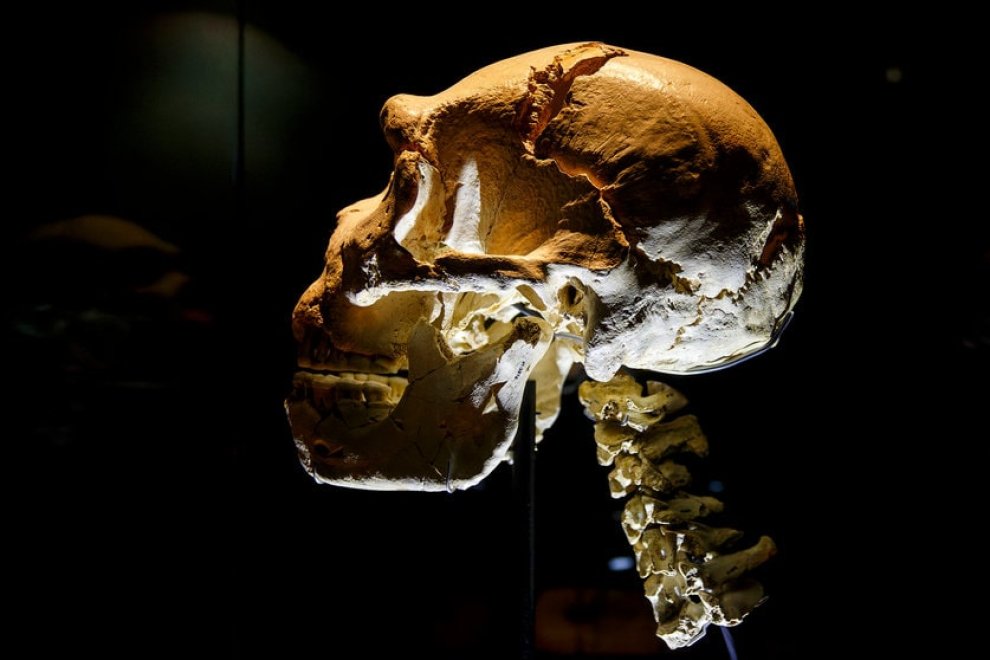
Into the Darkness
In Atapuerca, Spain, there is a mountain range filled with caves and tunnels. Deep inside, a shaft plunges 43 feet straight down into absolute darkness. At the bottom of this shaft is where archaeologists found a disturbing site. More than 5,000 fossilized bones, belonging to at least 28 individuals, sealed away for almost half a million years. Yes, the site was almost 500,000 years old.
When explorers and archaeologists first lowered themselves into the pit in the 1970s, they might have anticipated finding a few animal bones. Instead, they unearthed a nightmare. Human bones lay in piles. Some skulls were cracked and smashed, jaws broken, femurs stacked one on another.
Imagine dangling by a rope as you descend this ancient shaft. Your headlamp barely illuminates the glistening human remains on the walls. Skeleton after skeleton appears. This is an ossuary not born of reverence, but of something much darker.
Who Were The Victims
The people of the Pit of Bones were different from us. They were early hominins—our ancestors, possibly on the evolutionary path to Neanderthals, known as Proto-Neanderthals. This site is significant to the story of Neanderthal evolution.
But their bones tell a story we can still understand.
They were young and old, both men and women. Their skeletons showed clear signs of injuries, deformities, and disease. Some skeletons suggest people limped through life; others reveal badly healed broken bones. Yet, at least one person did not die by accident. Here, the site truly becomes a murder scene.
During excavations, archaeologists discovered a skull—now known as Cranium 17—with two distinct holes punched into it. These were not random cracks caused by falling rocks. They were not caused by animal bites. Two deliberate, repeated blows to the forehead with a blunt object. It’s the world’s earliest evidence of murder.
Half a million years ago, someone murdered this person—and then their body ended up at the bottom of the pit with all the other skeletons.
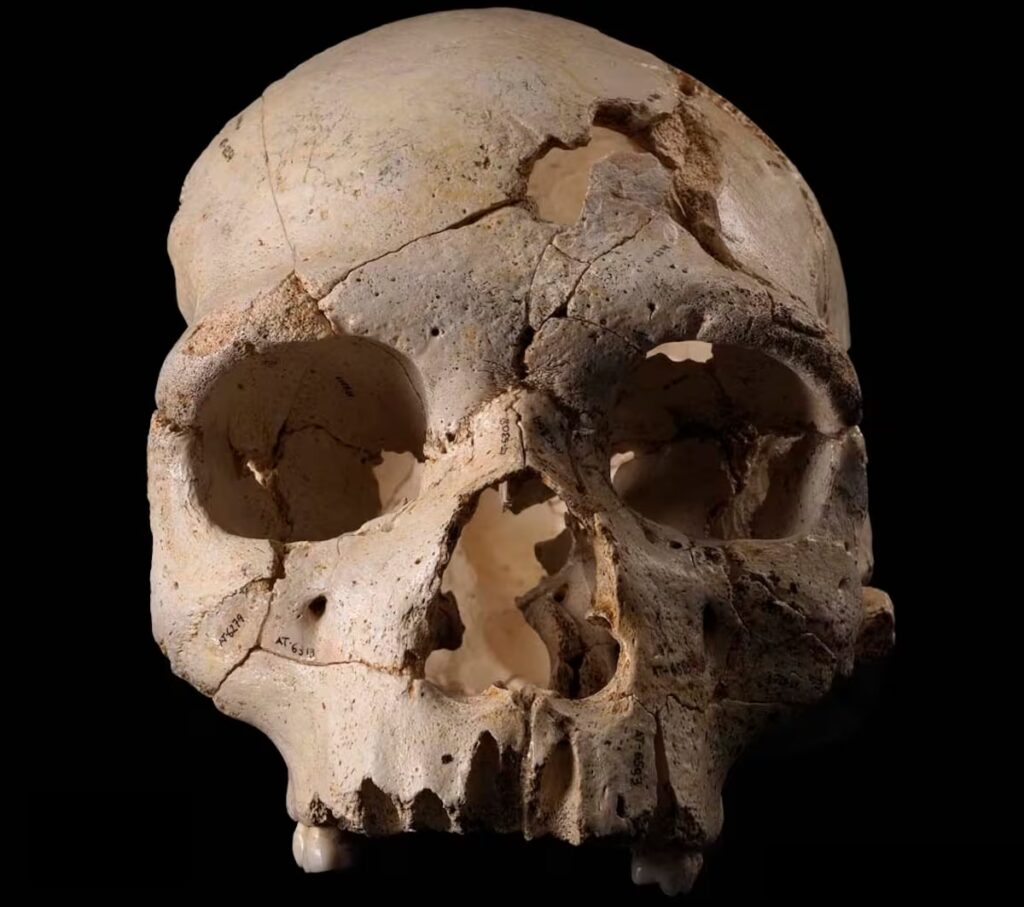
But what exactly did this pit represent—a mass grave or just a dumping ground?
What’s most chilling about the Pit of Bones is how the site comes across as a deliberate deposition of bodies. The archaeology shows these bodies weren’t dragged here by predators. They weren’t washed in by floods. They were put there. Deliberately. Over and over again, for centuries.
So why?
One theory proposed by some archaeologists is that this was the earliest form of a cemetery—a place where prehistoric people buried their deceased loved ones. This would have involved carrying the bodies into the cave and throwing them down the shaft. To us, it sounds barbaric, yet still quite human, with aspects of ritual and deposition.
The evidence also hints at a darker reality, at least for one individual. If Cranium 17 was murdered, how many others were victims of violence? Was this a dumping ground for the unwanted, the weak, the troublesome? A hidden record that violence has shaped our story from the start?
Burying the Dead – 400,000 Years Ago
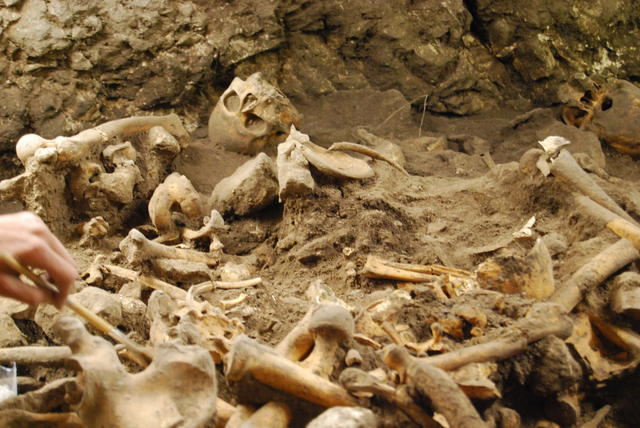
What is unsettling about the Pit of Bones isn’t just the violence or bodies thrown into darkness, but the reminder that such acts span over 430,000 years. These people had stone tools, fire, and social groups—close enough to us that we can recognize ourselves in their struggles, but also in their capacity for violence.
And yet, even then, we know that one individual murdered another. Someone decided to use a rock as a weapon and end another life.
What it shows is that violence, murder, and cruelty are not modern problems—they are ancient companions in the human experience. The Pit of Bones reminds us that violence has always been part of our story.
In the Silence of the Cave
When archaeologists handle those skulls, they aren’t just touching prehistory—they’re touching the oldest evidence of betrayal, of fear, of blood spilled by human hands. They are dealing with what may be the first crime scene in the world.
This cave held its secret for over 400,000 years, hiding the fact that a murder occurred here all those years ago. We have no idea why they were killed, but we do know the weapon and how they died.
The Last Word
The Pit of Bones isn’t just a scientific treasure. It proves that our dark side—our capacity for violence—reaches back to humanity’s earliest chapters.
We’ve always loved, cared, and protected one another. But we’ve also always killed. In the darkness of a Spanish cave, half a million years old, the evidence is unmistakable: murder has been with us since the dawn of humanity.

